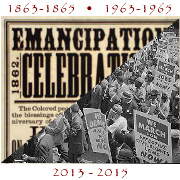Reflections by Sumiko R. Mekaru and James DeW. Perry
Participants who don’t identify as “white” or “black” may not immediately know how they fit into a discussion about the American legacy of slavery. The experiences of other racial groups in U.S. history have often paralleled, but have also diverged from, or even been in conflict with, the experience of African slaves and their descendants.
Hispanic Americans, who are often black or part black themselves, may be descended from slave owners or slaves in Cuba, Brazil, or other Spanish or Portuguese colonies in the Caribbean or Latin America. Black members of these societies frequently experience significant discrimination today. Tens of thousands of Native Americans were enslaved (most were sent to the Caribbean), and others were expelled from their land so that slave-based plantations could be built. Meanwhile, many Native Americans owned black slaves.
Despite different histories, common themes of racial inequality emerge across racial groups. The separation of non-white from white can be seen in the barrios, the Jim Crow South, the creation of reservations and, in the extreme, the Japanese American internment camps. Until the 1960s, many African Americans could not eat in restaurants they worked in, and Chinese laborers who built the final stretch of the transcontinental railroad were fired and forced to walk back to San Francisco from Utah, barred from the railroad they built. In another parallel, between 1880 and 1930, Mexican Americans and African Americans were lynched at similar rates.
All too often, racial groups in the U.S. have been set up against one another. Hispanic and Asian American participants may be conscious that their families generally chose to immigrate and arrived into free communities, retaining their families, culture and values, while enslaved Africans were forced to migrate, largely stripped of family, culture, language and religion. Non-white immigrants have faced a two-tiered system, with whites on top and blacks on the bottom; success of individuals and groups has often correlated with how “white” or “black” they have behaved or appeared. The Asian-American “model minority” stereotype compares them not to the white majority, but rather to “less successful” groups, especially African Americans—despite not having faced the same historical obstacles.
Depending on the dynamics among the participants, there may be a tendency to tally guilt and injustices by race. The importance of each group’s historical experiences should be acknowledged, while encouraging a broader frame of societal responsibility. The perspectives of each group can be invaluable in understanding racial injustice and in evaluating solutions. For example, the internment of Japanese Americans in World War II led Congress, twenty years ago, to offer $1.6 billion in reparations to the victims and their heirs.
Sumiko R. Mekaru
James DeW. Perry


